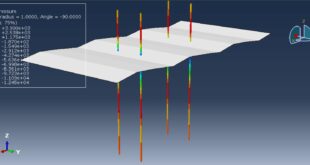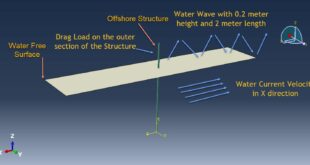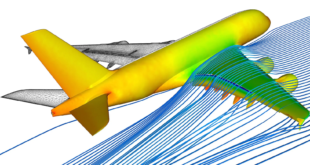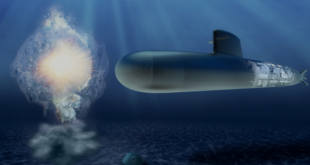In this tutorial, the Simulation of low energy impact on the RC beam and residual displacement investigation in Abaqus has been done. The concrete beam is modeled as a three-dimensional solid part. The steel bars and strips are modeled as three-dimensional wire parts. The hammer is modeled as a rigid sphere. You can see a figure of the assembled parts below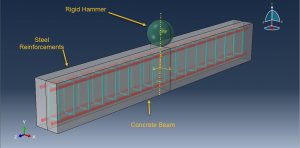
Concrete structures are used in a wide variety of civil infrastructure applications, such as buildings and bridges. The structures in service are commonly subjected to a range of extreme loading events, including low-velocity impact loads. To understand the response of concrete structures under the impact, full-scale experiments often provide the most reliable predictions. Such tests, however, require significant time, effort, and investment, which unavoidably limit the number and scope of investigations, especially in the destructive range. As an alternative, numerical studies have received growing attention, owing to the current computational power. Despite the availability of simulation capacity, the accuracy of numerical studies greatly depends on the capability of material models.
To model concrete behavior under the low-velocity impact, the Concrete Damage Plasticity Model(CDPM) is used. The model is a continuum, plasticity-based, damage model for concrete. It assumes that the main two failure mechanisms are tensile cracking and compressive crushing of the concrete material. To model reinforcement behavior, the elastic-plastic data is selected. The dynamic explicit step is appropriate for this type of analysis. The surface to surface contact with contact property as friction is used to define contact between the rigid body and concrete beam. The embedded region constraint is used for the steel reinforcement in the concrete host. The fixed boundary condition is selected for the two ends of the beam and initial velocity is assigned to the rigid hammer. The mesh should be fine to obtain correct results
After the simulation, all results such as stress, strain, tensile and compressive damage, residual displacement, and… are available. You can see some figures for the results below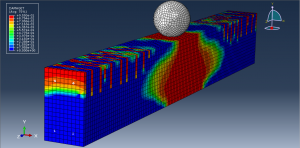
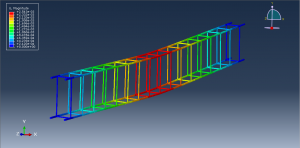
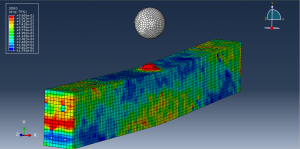
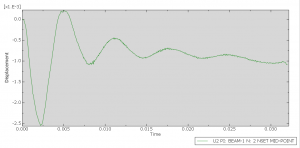
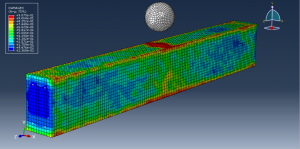
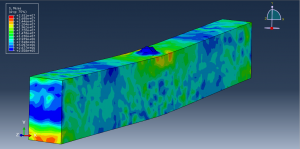
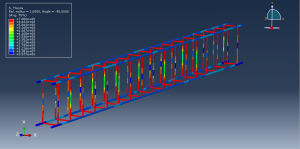
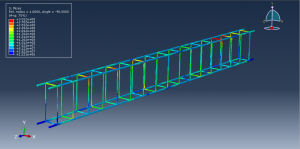
You can provide CAE, INP, and English video files of this simulation here. The cost of these files is Twenty-two Euros. you can click on the bellow bottom to beginning the process
You can purchase the tutorial through a PayPal account, a Visa, or a Master card, just before payment, send me an email to this address: karampourp@gmail.com
 Abaqus tutorials Abaqus tutorials
Abaqus tutorials Abaqus tutorials
